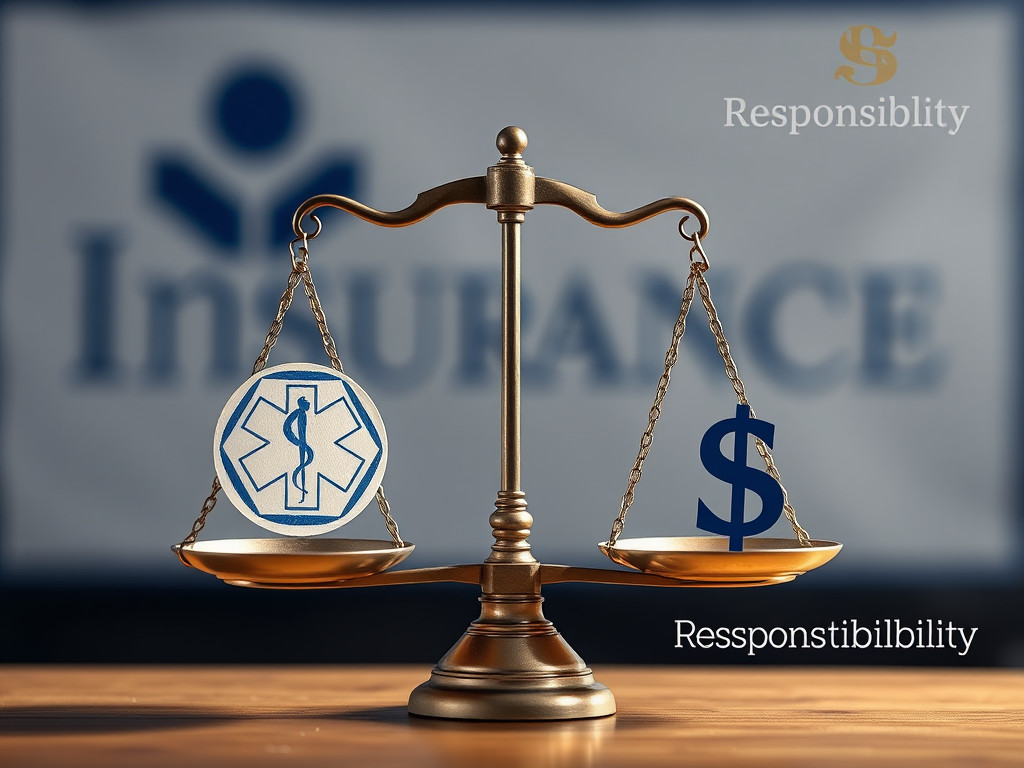Did you know that insurance companies have a playbook of tactics to minimize your injury settlement? 🤔 It’s true! In California, where accident rates are high and legal complexities abound, these companies guard their secrets closely. But what if you could peek behind the curtain and turn the tables in your favor?
Imagine walking into negotiations armed with insider knowledge that could potentially double or triple your settlement. From hidden clauses to calculation tricks, insurance adjusters use a variety of methods to keep payouts low. But here’s the kicker: most people never even realize they’re being shortchanged! 💼💰
In this eye-opening exposé, we’ll pull back the curtain on “7 Shocking Secrets Insurance Companies Don’t Want You to Know About California Injury Settlements.” We’ll explore everything from understanding your rights and responsibilities to the intricate process of calculating damages. You’ll discover the crucial role juries play in award decisions and uncover additional factors that can make or break your case. Get ready to empower yourself with knowledge that could make all the difference in your injury claim!
Learn About It

Learn About It
When it comes to personal injury settlements in California, knowledge is power. Insurance companies often rely on claimants’ lack of information to minimize payouts. Here are some crucial aspects you should be aware of:
Key Factors Affecting Personal Injury Settlements
- Severity of injuries
- Long-term impact on quality of life
- Medical expenses (current and future)
- Lost wages and earning capacity
- Pain and suffering
Common Tactics Used by Insurance Companies
- Delaying claims processing
- Offering quick, low settlements
- Disputing liability
- Downplaying injury severity
To maximize your personal injury settlement, it’s essential to understand how damages are calculated and what factors influence the final compensation amount.
| Type of Damage | Description | Examples |
|---|---|---|
| Economic | Measurable financial losses | Medical bills, lost wages |
| Non-Economic | Subjective, non-monetary losses | Pain and suffering, emotional distress |
| Punitive | Punishment for egregious behavior | Rarely awarded, requires proof of malice |
Understanding California personal injury laws is crucial for navigating the settlement process effectively. Familiarize yourself with concepts like comparative negligence, which can affect your compensation based on your level of fault in the incident.
Now that we’ve covered the basics of personal injury settlements in California, let’s explore who bears responsibility in these cases.
Responsibility

Responsibility
When it comes to personal injury settlements in California, understanding responsibility is crucial. Determining fault plays a significant role in the outcome of your case and can greatly impact your compensation.
Comparative Negligence in California
California follows a “pure comparative negligence” rule, which means that multiple parties can share responsibility for an accident. This system allows plaintiffs to recover damages even if they are partially at fault. However, the amount of compensation is reduced by their percentage of fault.
Here’s a breakdown of how comparative negligence affects settlement amounts:
| Plaintiff’s Fault | Potential Compensation |
|---|---|
| 0% | 100% of damages |
| 25% | 75% of damages |
| 50% | 50% of damages |
| 75% | 25% of damages |
Proving Responsibility
To maximize your personal injury settlement in California, it’s essential to gather evidence that clearly demonstrates the other party’s fault. This may include:
- Eyewitness testimonies
- Police reports
- Surveillance footage
- Expert analysis
- Medical records
Insurance companies often try to shift blame onto the injured party to reduce their payout. By presenting a strong case for the other party’s responsibility, you can counteract these tactics and potentially increase your settlement amount.
Now that we’ve covered the importance of responsibility in California injury cases, let’s explore how damages are calculated to determine the value of your claim.
Calculating Damages

Calculating Damages
When it comes to personal injury settlements in California, understanding how damages are calculated is crucial. Let’s break down the three main types of damages:
A. Special Damages
Special damages, also known as economic damages, are quantifiable losses that can be easily calculated. These include:
- Medical expenses
- Lost wages
- Property damage
- Future medical costs
- Loss of earning capacity
| Type of Special Damage | Description |
|---|---|
| Medical expenses | Current and future medical bills related to the injury |
| Lost wages | Income lost due to time off work for recovery |
| Property damage | Cost of repairing or replacing damaged property |
| Future medical costs | Anticipated medical expenses for ongoing treatment |
| Loss of earning capacity | Reduced ability to earn income in the future |
B. Medical Damages
Medical damages are a subset of special damages and often form a significant portion of personal injury settlements in California. They include:
- Hospital bills
- Medication costs
- Rehabilitation expenses
- Medical equipment
- In-home care
C. General Damages
General damages, also called non-economic damages, are more subjective and harder to quantify. They include:
- Pain and suffering
- Emotional distress
- Loss of enjoyment of life
- Loss of consortium
Calculating these damages requires careful consideration of various factors, including the severity of the injury, its impact on daily life, and long-term consequences. Insurance companies often try to minimize these damages, which is why it’s crucial to have a thorough understanding of how they’re evaluated in California personal injury cases.
The Jury’s Role in Damage Awards

The Jury’s Role in Damage Awards
When it comes to personal injury settlements in California, the jury plays a crucial role in determining the final compensation amount. Understanding this process is essential for maximizing your personal injury settlement.
Jury’s Responsibilities
The jury in a personal injury lawsuit has several key responsibilities:
- Evaluating evidence
- Determining fault
- Assessing damages
- Deciding on compensation
Factors Considered by Juries
Juries take into account various factors when determining damage awards:
| Factor | Description |
|---|---|
| Severity of injuries | The extent and long-term impact of the injuries |
| Medical expenses | Current and future medical costs related to the injury |
| Lost wages | Income lost due to inability to work |
| Pain and suffering | Non-economic damages for physical and emotional distress |
| Defendant’s conduct | Whether the defendant’s actions were particularly egregious |
Impact on Settlement Negotiations
The potential for a jury trial often influences settlement negotiations. Insurance companies may be more willing to offer fair settlements to avoid the unpredictability of jury awards. This knowledge can be leveraged to maximize your personal injury settlement in California.
Understanding the jury’s role in damage awards is crucial for navigating the complexities of personal injury lawsuits in California. With this insight, we can now explore additional factors that influence injury settlements.
Additional Factors

Additional Factors
When it comes to personal injury settlements in California, several additional factors can significantly impact the final compensation amount. Understanding these elements is crucial for maximizing your personal injury settlement.
Comparative Negligence
California follows a “pure comparative negligence” rule, which can affect your settlement amount. Here’s how it works:
- Your compensation may be reduced by your percentage of fault
- Even if you’re 99% at fault, you can still recover 1% of damages
- Insurance companies often use this to lower settlement offers
Pre-Existing Conditions
Pre-existing conditions can complicate personal injury claims:
- Insurance companies may argue your injuries are pre-existing
- You may be entitled to compensation if the accident worsened your condition
- Proper medical documentation is crucial in these cases
Policy Limits
Insurance policy limits play a significant role in settlement amounts:
| Policy Type | Typical Limits | Impact on Settlement |
|---|---|---|
| Minimum Auto | $15,000/$30,000 | May limit recovery in serious accidents |
| Umbrella | $1 million+ | Can provide additional coverage |
| Commercial | Varies | Often higher limits for businesses |
Future Damages
Considering future damages is essential for long-term injuries:
- Ongoing medical treatment costs
- Future lost wages or diminished earning capacity
- Potential long-term pain and suffering
By understanding these additional factors, you can better navigate the complex landscape of California injury compensation and work towards a fair settlement that adequately covers your damages.

Insurance companies often employ tactics to minimize payouts, but armed with knowledge, you can protect your rights and secure fair compensation. Understanding the intricacies of injury settlements, including how damages are calculated and the jury’s role in awarding them, is crucial. Factors such as shared responsibility and additional considerations can significantly impact your settlement.
Don’t let insurance companies take advantage of you. Stay informed, be prepared, and consider seeking professional legal advice to navigate the complex world of California injury settlements. By doing so, you’ll be better equipped to fight for the compensation you truly deserve.



